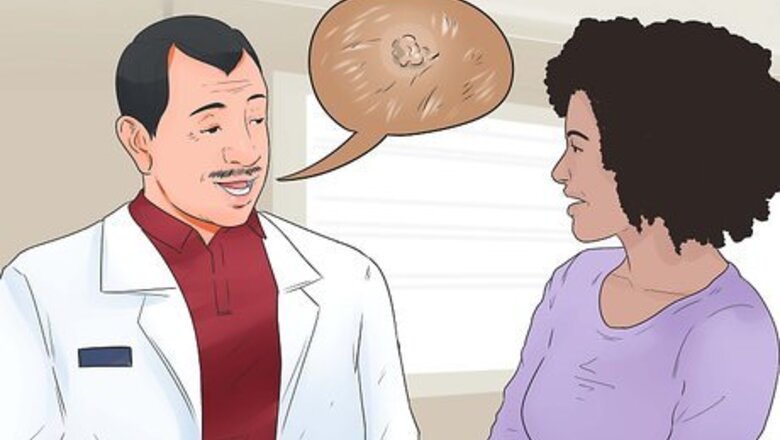
views
Assessing the Wart
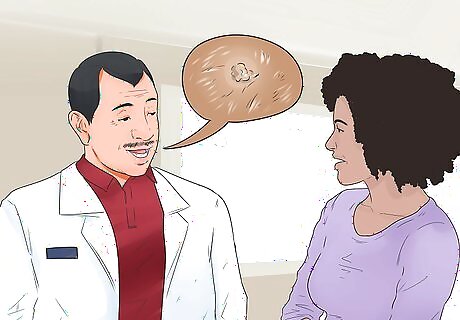
Assess whether a growth is a wart. Dog warts, or sebaceous gland cysts, are a type of benign skin mass that appears in dogs as they age, similar to how moles appear in humans. Other growths can also occur on a dog’s body. Some examples include skin tags, mast cell tumors, histiocytomas, hair follicle tumors, collagenous nevi, and fibromas. If you are ever in doubt as to whether the growth you are seeing on your dog is a simple wart or some other disease, consult your veterinarian. They can draw some of the cells out of the growth and examine it under the microscope to give you an accurate diagnosis.
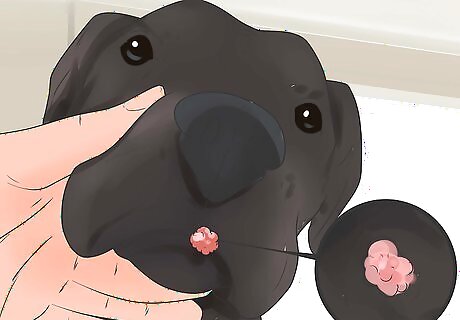
Examine the appearance of the wart. The papillomavirus causes true warts and is usually found in puppies or older dogs with an imbalance in their immune system. These warts look like cauliflower stalks and typically appear along the nose, lips, or gums. The warts usually disappear after a few months as the immune system develops, but they can be contagious and make it difficult for your dog to swallow or breathe. Common, benign warts are flesh-colored and small. They tend to look like tiny mushrooms. If a benign wart grows or looks inflamed, you may need to remove it. You cannot always tell by looking at it if it is a cancerous tumor or not. Many times, cancerous warts are black, quick-growing, and inflamed. They generally form around the eyelids or lips and should be removed as soon as possible.
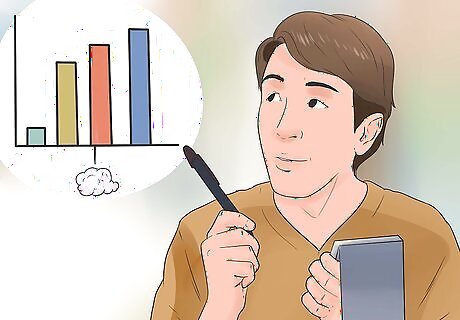
Chart the growth of the wart. As long as a wart does not increase in size or change shape, you probably do not need to remove it. You should, however, make your vet aware of any warts your dog develops so that they can also keep track of them. Many warts disappear on their own, but even those that persist generally remain harmless.
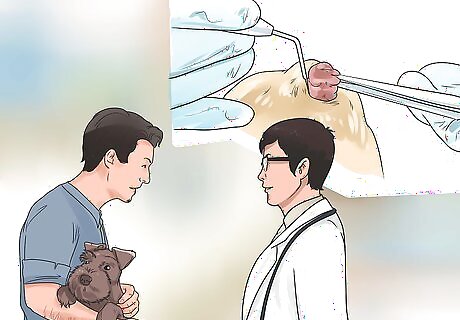
Consider whether or not the wart poses a problem. You can remove a wart merely for cosmetic purposes, but it is generally not recommended to perform surgery for that reason alone. If, however, a benign wart keeps getting snagged, causes your dog to itch and scratch, or otherwise makes your dog uncomfortable, you may opt to have it removed. Your veterinarian can also give you guidance as to whether the wart needs removal. Warts that the dog can irritate by scratching or rubbing or that rubs against a collar are best removed to avoid repeated infections and inflammation. Itching can sometimes signal that the wart is cancerous and should be removed.
Treating a Wart at Home
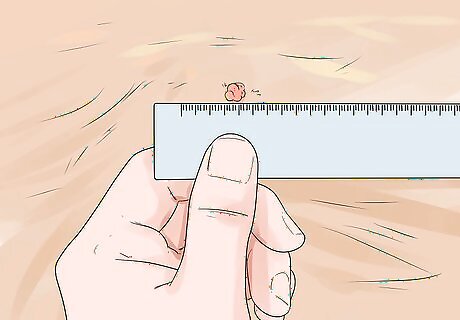
Chart the progress of any treatment you choose. On the first day before treatment, chart the wart. Photograph the existing wart (or mole) to establish a baseline. Use a metric ruler to measure the wart in millimeters. Date the photograph, circle day one of treatment on the calendar, and write down the measurements. As long as you are positive that your dog only has a benign (non-cancerous) wart, you can try some of these holistic treatments. Remember that no scientific evidence supports the efficacy of any of these methods. So, if the wart turns black, grows quickly, or becomes inflamed, bring your pet to a licensed veterinarian for medical treatment.
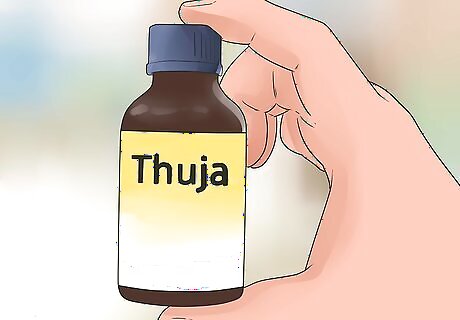
Try Thuja. Thuja is a homeopathic treatment made from a type of tree, and it is considered safe for most dogs. It is available in both pellet and liquid forms and should be given to your dog orally. You only need to give your dog a single dose. However, if you do not see any improvement after the first two weeks, you may give your dog a second dose. Thuja can cause abortions, so do not use it in a pregnant animal. Similarly, Psorinoheel is a supplement that includes psorinum, sulfur, and Thuja, which all act as antiviral agents that can help treat dog warts.
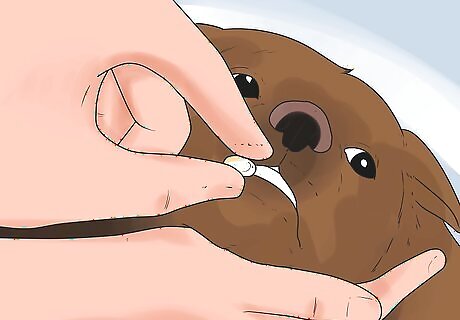
Boost your dog's immune system with vitamin support. The wart may be a symptom of a weakened immune system, so it may disappear if you address the problems with your dog's immune system. The supplement Immunosupport contains several immune-boosting ingredients, including arabinogalactans, lutein, and shitake mushrooms.

Give your dog L-Lysine. This is available in pill form. Give the affected dog 500 mg twice a day until the warts disappear.
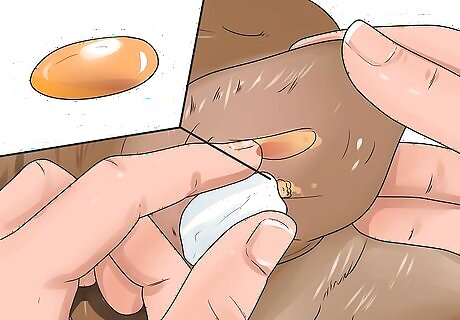
Apply vitamin E to the wart. Use a sterilized needle or knife to puncture a standard vitamin E capsule. Apply the vitamin directly to the wart using clean fingers or a cotton swab. Repeat this procedure 3 to 4 times a day for 2 to 3 weeks until you see improvement.
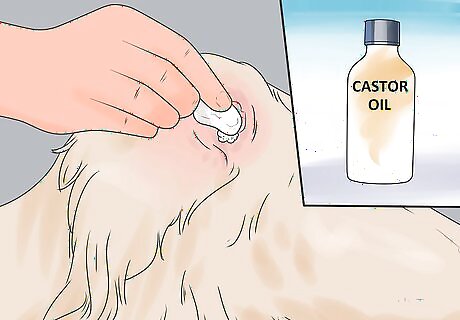
Rub castor oil over the wart. Standard castor oil, found in most drug stores, can soften dog warts and greatly reduce irritation, which will help prevent your dog from scratching the wart open. Use a clean finger or cotton swab to apply oil directly to the wart. Apply this treatment once every day or 2 (or as necessary to reduce irritation) until the wart vanishes.
Removing a Wart Medically
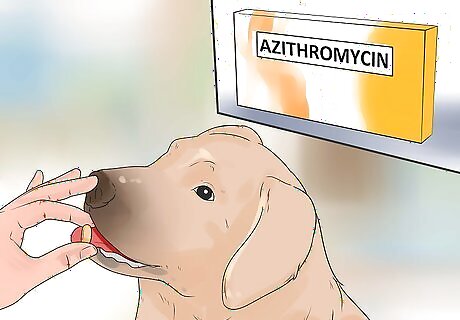
Give your dog azithromycin. This is a type of antibiotic used to treat warts in humans and has also proven to be an effective treatment for warts in dogs. It will need to be prescribed by a veterinarian. Treatment is an oral dose (calculated based on your dog’s weight) once a day for up to 10 days.
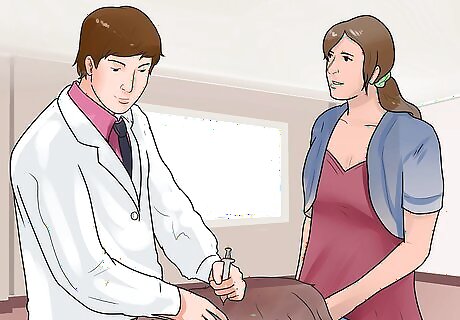
Consider a subcutaneous interferon treatment for warts caused by viral infections. This is an antiviral treatment that can be prescribed by your vet, which is available for warts unresponsive to other treatments or for severe wart growth. Your veterinarian will inject the treatment into your dog multiple times a week, or they may demonstrate how to inject the drug and instruct you to do so at home. These treatments can continue for up to 8 weeks. While you can avoid surgery and the associated risks, this treatment can cause a number of side effects, including fever and loss of appetite.
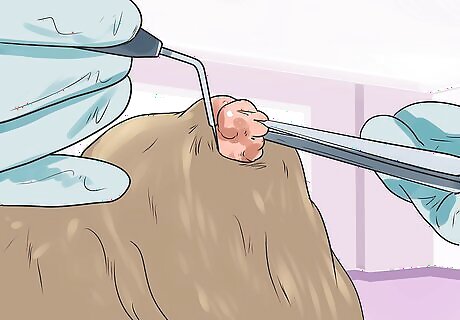
Ask your vet to perform electrocautery. When performing electrocautery, also called electrosurgery, the veterinarian uses a small tool to apply a small, concentrated amount of electricity to the wart. This electricity burns away the contaminated tissue, thereby removing the wart. The surgery is usually performed under local anesthesia, making it a good option if you worry about the risks involved in knocking your dog out with general anesthesia.
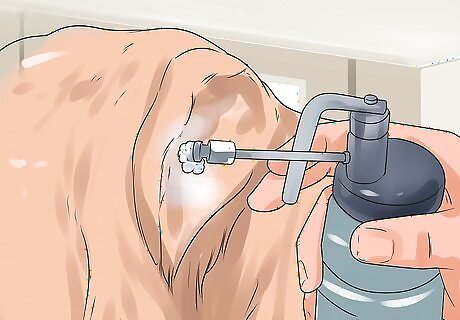
Discuss the possibility of cryosurgery with your veterinarian. During cryosurgery, the vet will use a specialized tool to freeze the wart. Freezing destroys the diseased tissue, shrinking the wart significantly and, in many cases, causing it to disappear entirely. Like electrocautery, cryosurgery is performed under local anesthesia, so your dog will not need to be completely knocked out.
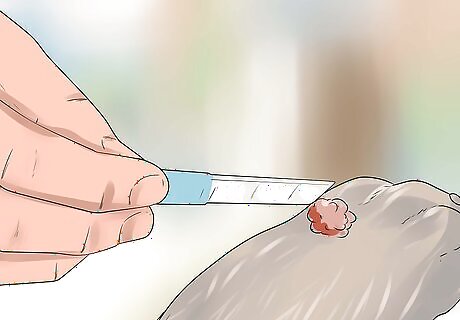
Opt for excision. An excision is the most traditional treatment for warts, but your veterinarian may need to put your dog under general anesthesia to perform it. During a traditional excision, the vet simply cuts the wart and contaminated tissue away using a medical scalpel. Your vet may wait to excise warts until your dog goes under general anesthesia for another reason, as putting a dog under is an extreme measure to put a dog through to remove warts.
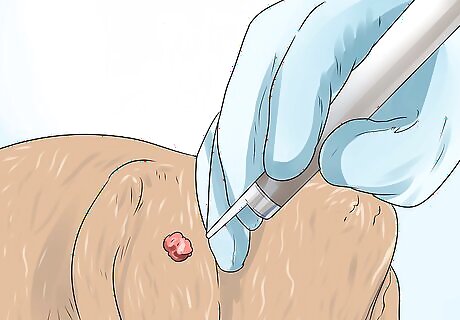
Try laser ablation. Opt for this treatment if your dog has persistent warts that do not respond to other treatments. Your dog will need to go under general anesthesia, but laser ablation attacks warts at the root and often proves itself to be the most powerful treatment against resistant or recurrent warts.




















Comments
0 comment